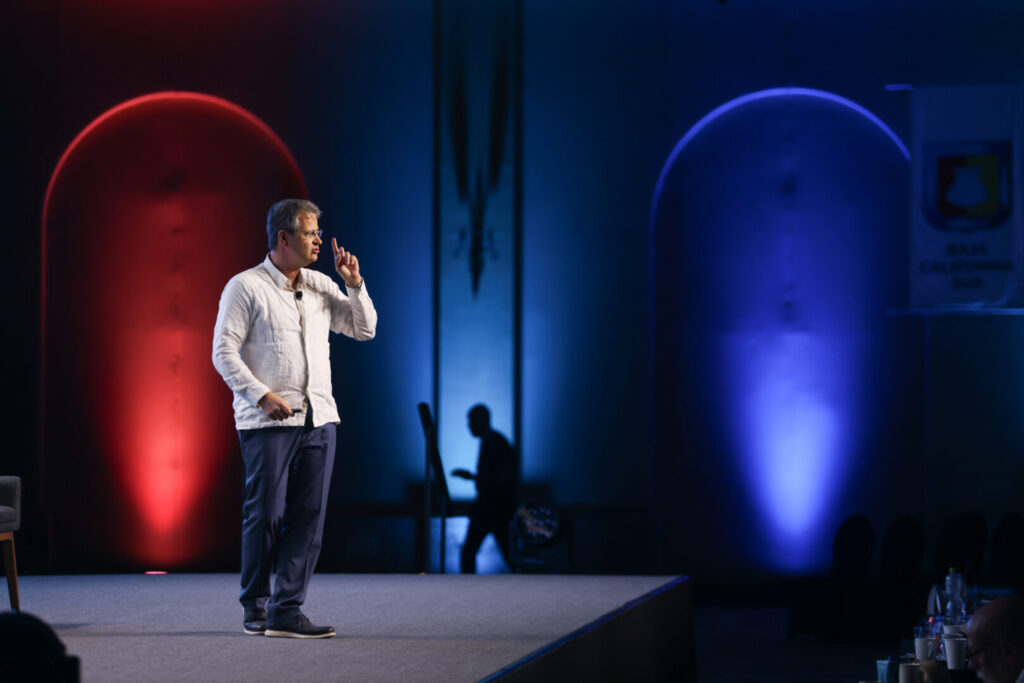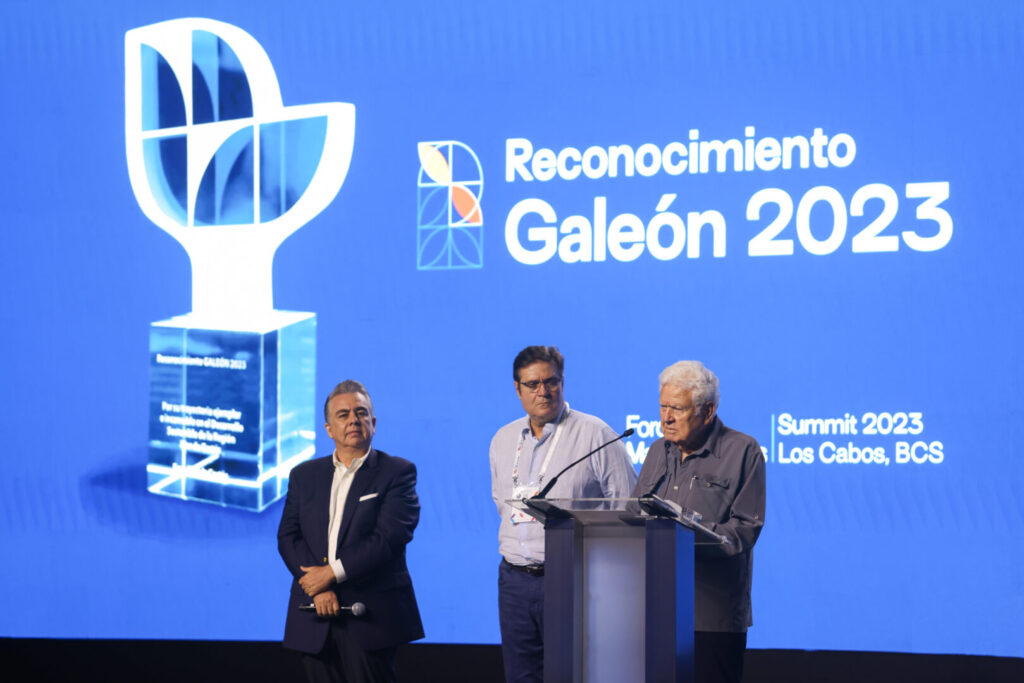Los Cabos, BCS. November 9, 2023. In the San Pedro Mártir mountain range there is a bird that can measure up to 1.40 meters from tip to tip, a scavenger animal called the California condor which has an elementary role in the Sea of Cortés Region.
This bird became extinct in 1939, but in the 1990s it was reintroduced naturally and a couple of Mexican scientists have been in charge of its conservation for 21 years.
It is about Juan Vargas Velazco y Catalina Porras PeñaField Chief and Program Director for Reintroduction of the Californian Condor in the Sierra de San Pedro Martirrespectively.
"Each organism, flora, fauna, snake that many people are afraid of... but each one has a function in the ecosystem to regulate, balance and if any species is exterminated, then the imbalance begins," explained Porras Peña in the discussion The case of the Californian condor in the Sierra de San Pedro Mártir.

These two people have spearheaded an ambitious project, the challenge of which is enormous. Caring for, conserving and defending this bird has meant living in difficult conditions, with sub-zero temperatures, snowy seasons with snow layers 3 meters thick, no running water and no communication with their families for months at a time.
The purpose of taking care of this bird is because it fulfills an essential task, since its diet consists of dead animals in the San Pedro Mártir mountain rangewhere there are glaciers that nourish the water at San Quintin ValleyThe plant is one of the most important agricultural centers in Mexico, which is why they serve to prevent the spread of bacteria that affect biodiversity.
According to the National Commission for the Knowledge and Use of Biodiversity (Conabio), "the loss of any species can generate negative changes in ecosystems, as well as create an imbalance that disturbs the environment and generates unhealthy systems, which in turn produce an alteration in other living beings, causing new diseases or the expansion of their frontiers".
The effort to conserve the California condor was sponsored for 15 years by the San Diego Zoo, California, leaving rewards such as keeping detailed records of each bird.
"Each condor has a personality, I know who they cheated, because they know how to cheat. We know that they are monogamous, they become widowers and it is a novel for each couple, it is quite funny. The life of these animals is impressive," said Porras Peña.

These animals fly in the San Pedro Mártir mountain range with labels, but that means that you have genetic information, which allows you to better understand this species.
For example, Catalina Porras Peña explained that this work has helped to understand diseases, such as lead poisoning due to high emissions of the chemical in the air.
This program ran out of funds five years ago, since the Mexican government was supposed to grant letters of support, but that did not happen and as of that date, the support that also helps the sustainability of valley of Baja California.
The work of Juan Vargas Velazco and Catalina Porras Peña has been elementary, as there are currently about 48 free-flying California condors in the Sea of Cortés Region And that, although it sounds simple, has been a complicated challenge, since these animals, which live 60 to 70 years, lay an egg every two years.
Who is it?
Juan Vargas Velazco. Field Chief of the California Condor Reintroduction Program. He is a biologist who since 2002 has dedicated his efforts to the conservation of the California condor in the Sierra de San Pedro Mártir National Park, in Baja California, where he has been living full time for 21 years, first in tents and since 2010 in the biological station.
Catalina Porras Peña. Director of the California Condor Reintroduction Program. She is a biologist responsible for the California Condor Reintroduction Program in the Sierra de San Pedro Mártir National Park, a species that before 2022 was on the verge of extinction and is slowly recovering.





